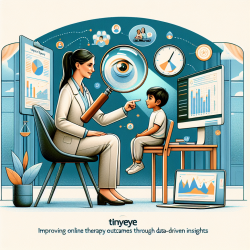Mastering Online Therapy: Insights from Sequence Evolution Models
In the rapidly evolving landscape of online therapy, staying ahead of the curve is crucial for practitioners. The latest research in sequence evolution models, particularly the general continuous-time Markov model, offers intriguing insights that can enhance online therapy services, such as those provided by TinyEYE. This blog explores how these scientific findings can be applied to improve therapeutic practices and encourages further exploration in this field.
Understanding the Markov Model of Sequence Evolution
The study, titled "General continuous-time Markov model of sequence evolution via insertions/deletions: are alignment probabilities factorable?" by Kiyoshi Ezawa, delves into the stochastic evolutionary models of DNA sequences. These models account for mutations like insertions and deletions (indels), which are more prevalent than substitutions in sequence evolution. By understanding these models, therapists can draw parallels to the evolution of therapy techniques and client interactions over time.
Key Takeaways for Practitioners
- Adaptability: Just as sequences evolve through various mutations, therapy must adapt to the unique needs of each client. Practitioners can benefit from being flexible and open to incorporating new methods and technologies.
- Continuous Improvement: The Markov model emphasizes the importance of continuous evolution. Similarly, therapists should engage in ongoing professional development to refine their skills and stay updated with the latest research.
- Data-Driven Decisions: The model's reliance on probabilistic calculations highlights the value of data in decision-making. Online therapy platforms can leverage data analytics to personalize therapy sessions and track client progress effectively.
Encouraging Further Research
The research underscores the need for models that accommodate biologically realistic features, such as overlapping indels and rate variations. This is a call to action for practitioners to explore how these concepts can be translated into the therapeutic context. By engaging with the latest scientific advancements, therapists can develop more effective strategies tailored to individual client needs.
Conclusion
Integrating insights from sequence evolution models into online therapy can lead to more personalized and effective therapeutic interventions. Practitioners are encouraged to delve deeper into this research to enhance their understanding and application of these concepts in their practice.
To read the original research paper, please follow this link: General continuous-time Markov model of sequence evolution via insertions/deletions: are alignment probabilities factorable?










